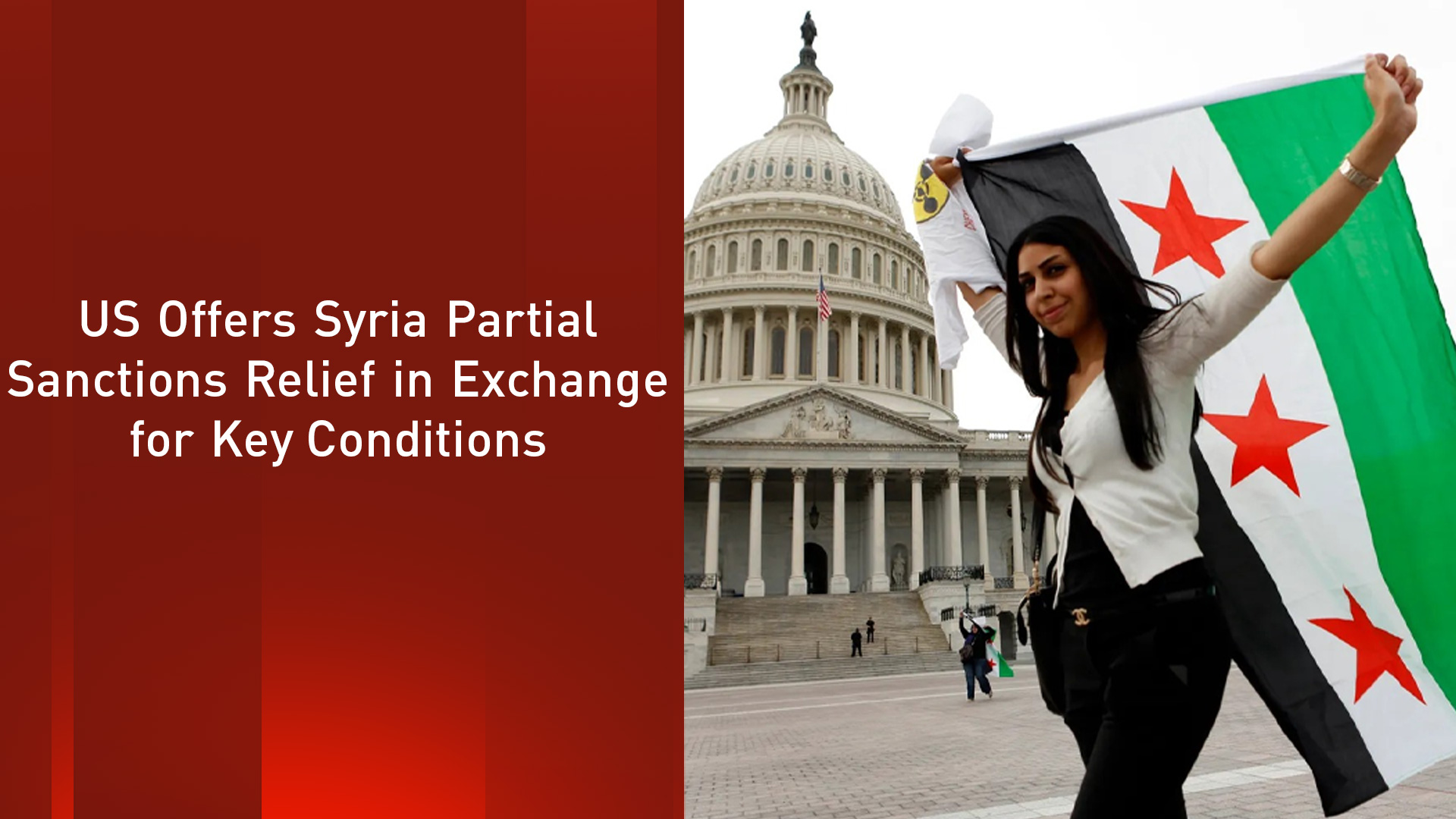US Offers Syria Partial Sanctions Relief in Exchange for Key Conditions
US Deputy Assistant Secretary for the Levant and Syria Natasha Franceschi handed over the list of demands to Syrian Foreign Minister Asaad al-Shaibani during the Syria Donor Conference.

By Ahora Qadi
Erbil (Kurdistan24) — The United States has presented Syria with a list of conditions to fulfill in exchange for partial sanctions relief, marking a significant diplomatic shift in the ongoing US-Syria relations. The move, conveyed during a meeting in Brussels on March 18, signals the Trump administration’s evolving approach toward Damascus.
Key Demands Outlined by Washington
According to Reuters, US Deputy Assistant Secretary for the Levant and Syria Natasha Franceschi handed over the list of demands to Syrian Foreign Minister Asaad al-Shaibani during the Syria Donor Conference.
Among the primary conditions:
- Elimination of Chemical Weapons: Syria must destroy any remaining chemical weapons and fully cooperate with international monitoring bodies.
- Counter-Terrorism Cooperation: Damascus is expected to strengthen efforts in combating terrorist organizations.
- Exclusion of Foreign Fighters: The US demands Syria remove foreign fighters from senior government roles. Concerns have grown over Syria’s appointment of former foreign rebels, including Uyghurs, Jordanians, and Turks, to defense ministry positions.
- Assistance in Locating Austin Tice: The American journalist, missing in Syria for over a decade, remains a focal point for US authorities. Washington has called for Syria to appoint a liaison to support search efforts.
In return, the US has proposed offering partial sanctions relief, though specifics regarding the extent and timeline remain unclear.
Syria’s Struggle Under Sanctions
Following 14 years of war, Syria’s economy is in severe decline. While US, UK, and EU sanctions were initially imposed to isolate Bashar al-Assad’s regime, they have continued even after his downfall in December 2024. Despite temporary measures, including a six-month sanctions waiver to facilitate humanitarian aid, the relief has had little impact on revitalizing Syria’s economy.
US Policy and Internal Divisions
Observers says that the delivery of Washington’s conditions offers the clearest insight yet into the Trump administration’s evolving Syria policy. While the US has condemned extremist violence and pledged support for Syrian minorities, broader policy direction has remained uncertain.
Internal debates within Washington have added to the complexity. Some White House officials favor a hardline approach, citing past ties between the new Syrian leadership and Al-Qaeda as justification for maintaining sanctions and minimizing engagement.
Conversely, the State Department advocates a more balanced strategy, exploring avenues for cautious engagement with the new Syrian government. These divisions were evident earlier this month during the deliberations over Secretary of State Marco Rubio’s statement condemning sectarian violence in western Syria, where armed loyalists to the former regime killed hundreds of civilians, predominantly from the Alawite minority.
While the White House sought a stronger condemnation, the State Department insisted on a more measured response, underscoring the need to maintain dialogue with Syria’s interim authorities.
The meeting between Franceschi and Shaibani marked the first high-level direct contact between Syria and the US since Trump took office in January 2025. Though neither side has publicly confirmed the specifics of the demands, the development highlights a potential shift toward diplomatic engagement.
